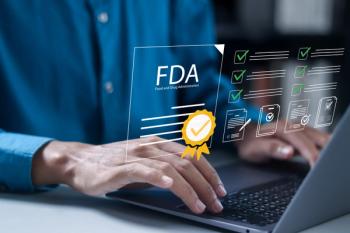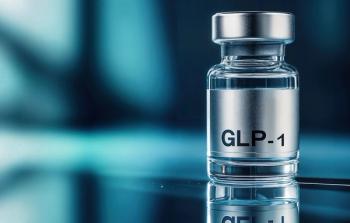How Technology is Moving the Industry Away from Animal Testing: Q&A with Dr. Jo Varshney
Key Takeaways
- AI and computational modeling are reducing reliance on animal testing by simulating human biology, improving drug safety and efficacy predictions.
- Regulatory bodies like the FDA and NIH are endorsing non-animal testing methods, signaling a shift towards human-relevant technologies in drug development.
New technologies are helping the industry move toward more predictive and humane approaches.
Animal testing is a crucial part of the drug development process and ensures that researchers are as certain as possible that a medication is safe before being given to humans. However, there are obvious downsides to this practice. Dr. Jo Varshney, CEO of VerSIM Life, spoke with Pharmaceutical Executive about how new technologies are making it possible that the industry may not need to take this step anymore.
How is technology impacting animal testing practices?
Pharmaceutical Executive: How is new technology helping move the industry away from animal testing?
Dr. Jo Varshney: For decades, animal testing has been the standard approach to assessing the safety and efficacy of new drugs before they reach humans. Yet despite its long history, this system has significant limitations. Animal models often fail to accurately predict how a drug will behave in people, and more than 90 percent of drugs that appear safe and effective in animals ultimately fail in human trials. This inefficiency not only costs billions of dollars in development but also delays life-saving treatments and raises serious ethical concerns.
Today, new technologies are helping the industry move toward more predictive and humane approaches. Advances in artificial intelligence, computational modeling, and data integration are enabling scientists to simulate human biology digitally before testing begins in animals or people. These methods allow researchers to explore how a compound interacts with human tissues, predict potential toxicities, and estimate effective doses using data-driven virtual models.
One of the most promising innovations is the use of biosimulation platforms that combine AI with mechanistic biological modeling. Instead of depending on animal data as a proxy for human response, these systems integrate molecular, chemical, and physiological information from many sources to replicate human biology. For example, predictive models can identify the likelihood of drug-induced liver injury or cardiovascular side effects by analyzing how molecular interactions disrupt human pathways, all without the need for live animal testing.
Digital models also help overcome a major limitation of traditional animal research: the lack of human diversity. Animal models cannot capture variations in genetics, age, or underlying health conditions. In contrast, virtual simulations can represent populations of “digital patients” to explore how different groups might respond to a drug. This improves the relevance of early-stage research and supports the design of safer, more inclusive clinical trials.
Regulators are increasingly embracing human-relevant technologies in place of traditional animal testing. For instance, the Food and Drug Administration (FDA) in April 2025 issued a roadmap entitled Roadmap to Reducing Animal Testing in Preclinical Safety Studies, which outlines a phased plan for the use of “new approach methodologies” (NAMs) that includes organ-on-a-chip systems, in silico modelling and advanced in vitro assays, in drug development. The FDA also launched its “New Alternative Methods Program” to support the qualification of these non-animal methods for regulatory use. Similarly, the National Institutes of Health (NIH) announced in 2025 that it will no longer solicit research proposals exclusively based on animal-only models, and established a dedicated new office , the Office of Research Innovation, Validation, and Application (ORIVA), to coordinate the development and scaling of non-animal approaches across its portfolio. These concrete regulatory signals reflect a clear shift: the field is moving toward platforms and test systems grounded in human biology, reinforced by policy rather than just aspiration.
At VeriSIM Life, we contribute to this progress through AI-driven biosimulation models that help predict human outcomes early in development. But this is a collective effort involving many innovators, scientists, and regulatory leaders working toward the same vision: a more predictive, ethical, and efficient drug discovery process.
Ultimately, moving away from animal testing is not just about replacing one method with another. It represents a broader transformation in how we study and understand human biology. As these technologies continue to advance, they promise a future of faster, safer, and more humane drug development that benefits both science and society.
PE: What is a realistic timeline for companies to replace animal testing with AI-driven platforms?
Varshney: Understanding a realistic timeline for companies to replace animal testing with AI‑driven platforms requires a nuanced view of science, regulation and industry readiness. While the ambition is high, the path is phased and pragmatic.
In the next 1 to 3 years, companies should expect meaningful adoption of AI and computational models in the preclinical and translational stages of drug development. This is where most attrition and cost lie. In this timeframe, animal testing will not vanish, but we will see a shift: animal studies becoming more selective, used only when needed to fill gaps that models cannot yet cover.
Moving into the 3 to 5 year horizon, companies can plan for AI‑driven and mechanistic biosimulation platforms to become the default in many preclinical safety and efficacy evaluations. The aforementioned FDA roadmap from April 2025 discussing “New Approach Methodologies” (NAMs), including AI‑based computational models and human organ‑based systems, affirms that these methods will gradually replace animal testing.
However, the 5-to-10-year and beyond timeframe is where full replacement will be realistic for most companies, and even then, not in every case. Complex aspects such as disease progression, immune system interactions, long‑term toxicities, and novel therapeutic modalities still present challenges for AI‑only approaches. Experts caution that complete elimination of animal models across all therapeutic classes is unlikely in the near term. In practice, a hybrid model will persist: AI‑driven platforms handling the bulk of preclinical work, with animal testing reserved for very specific, scientifically justified instances.
For companies preparing for this change, the key is to invest now in validation of AI‑driven platforms, mechanistic transparency and regulatory alignment. At VeriSIM Life, we emphasise not just prediction but explainability and benchmarking of our platforms to build trusted evidence. But even beyond any single company, the industry must build shared datasets, validation frameworks and regulatory precedents for AI‑based methods to be accepted broadly.
In short: within 1‑3 years, we will see accelerated uptake of AI and fewer routine animal tests; by 3‑5 years, many preclinical safety programs will shift to AI‑driven default; and over the next decade, animal testing will become highly specialised rather than standard for most drug development programmes. This is a transformation rooted in technology, science and regulation, and it is already underway.
PE: How accurate are AI-driven platforms when it comes to testing?
Varshney: When considering how accurate AI‑driven platforms are for preclinical testing, the answer is promising but nuanced. These systems are designed to predict human biological responses more directly than traditional animal models, which often fail to translate effectively into human outcomes. In practice, AI‑driven platforms can achieve high levels of accuracy for many endpoints, particularly for predicting toxicity, efficacy, absorption, distribution, metabolism, and excretion (ADME) properties, as well as molecular interactions.
For well-defined tasks such as assessing liver toxicity or predicting how a drug will bind to its target, these platforms frequently reach accuracy levels above 80 percent. This represents a meaningful improvement over animal models, which often fail to capture species differences and human variability. For more complex outcomes, such as rare adverse events, accuracy is currently lower. Still, it continues to improve as models are trained on larger datasets and incorporate deeper mechanistic understanding of human biology.
It is important to recognize that accuracy in AI‑driven testing is not a simple percentage. What matters most is confidence, interpretability, and practical utility. These platforms are strongest when used to prioritize compounds, guide experimental design, and identify potential safety risks early. They allow researchers to focus resources on the most promising candidates while reducing reliance on less predictive animal models. At VeriSIM Life, for example, our AI‑driven biosimulation platform integrates physiology, pharmacology, and mechanistic insights to provide predictions that are both reliable and explainable, which is critical for regulatory acceptance and decision-making.
Even with high accuracy, AI‑driven platforms are not yet a complete replacement for all forms of preclinical testing. They are most effective when integrated into a broader workflow, complementing targeted experimental studies. Over time, as models continue to improve and more human data becomes available, the predictive power of these systems will increase, further reducing the need for animal studies.
In summary, AI‑driven platforms are already highly accurate for many preclinical applications, particularly those grounded in well-characterized biological processes. While not perfect, they provide actionable, human-relevant insights that can improve decision-making, reduce development costs, and decrease reliance on animal testing. The technology continues to evolve rapidly, and as it matures, its accuracy and predictive value will only grow, moving the industry closer to a future in which drug development is faster, safer, and more humane.
PE: What are the risks of moving to AI-driven platforms for testing?
Varshney: Shifting to AI‑driven platforms for preclinical testing offers tremendous opportunities, but it also comes with a set of risks that companies must manage carefully. Understanding these risks is critical to ensuring that the transition improves drug development without introducing new problems.
One of the primary risks is data quality and availability. AI models are only as good as the data they are trained on. If datasets are incomplete, biased, or not representative of human biology, predictions may be inaccurate or misleading. This could lead to false confidence in a compound’s safety or efficacy, or to the premature discarding of promising candidates. Companies must invest in robust data curation, validation, and integration to ensure models reflect real-world biological complexity.
Another challenge is biological complexity. Human biology is extraordinarily intricate, and aspects of disease, the immune response, metabolism, and long-term effects are difficult to fully capture in a digital model. While AI platforms excel in many areas, they may not yet account for rare or idiosyncratic reactions, multi-organ interactions, or long-term safety endpoints. Over-reliance on models without complementary experimental verification could create blind spots in risk assessment.
Regulatory acceptance also represents a significant hurdle. While regulatory agencies like the FDA and NIH have issued guidance encouraging the use of non-animal methods, AI-based predictions must still meet stringent validation and transparency standards. Companies need to provide clear evidence that models are reliable, reproducible, and fit-for-purpose. Without this, there is a risk of delays or rejection in regulatory submissions.
Overconfidence in automation is another potential risk. AI-driven platforms are powerful decision-making tools, but they are not infallible. Misinterpretation of model outputs or overreliance on predictions without critical scientific oversight can lead to errors in compound selection or dosing strategy. Maintaining a balance between AI insights and human expertise is essential to mitigate this risk.
Finally, there are ethical and reputational considerations. Stakeholders, including patients, investors, and regulators, may have concerns about the safety of relying on AI in lieu of traditional testing. Companies must be transparent about how models are used, what validation has been conducted, and how AI fits into a broader preclinical strategy to build trust.
At VeriSIM Life, we address these risks by integrating mechanistic biology into our AI-driven biosimulation platform, prioritizing explainability, benchmarking predictions against clinical data, and combining digital insights with targeted experimental studies. This approach ensures predictions are actionable, explainable, credible, and regulatory-ready.
In summary, moving to AI-driven platforms brings risks related to data quality, biological complexity, regulatory acceptance, overreliance on automation, and stakeholder trust. None of these risks is insurmountable, but they require careful planning, rigorous validation, and ongoing oversight. When managed effectively, the benefits: faster, safer, and more human-relevant drug development, far outweigh the potential pitfalls.
Newsletter
Lead with insight with the Pharmaceutical Executive newsletter, featuring strategic analysis, leadership trends, and market intelligence for biopharma decision-makers.






